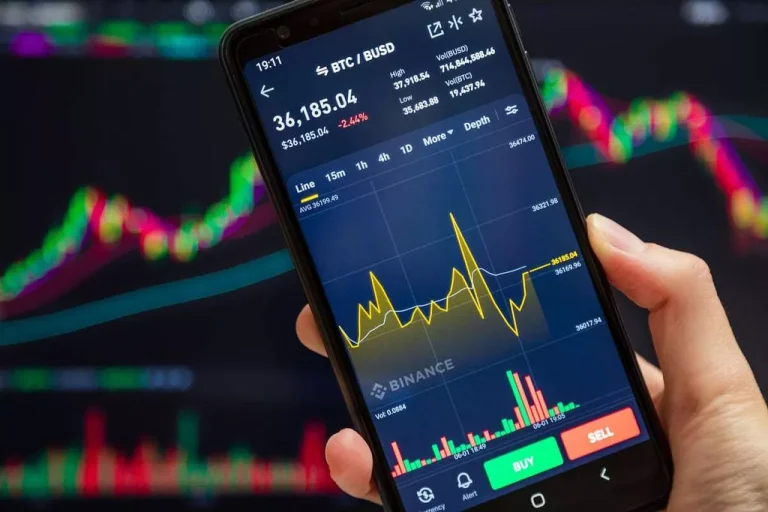Content
CFDs on stocks offer traders the opportunity to speculate on the price movements of individual company shares. You don’t own the underlying stock; instead, you’re trading based on whether you believe the stock price will go up or down. Stock CFDs are appealing to both short-term traders and long-term investors, as they provide a flexible way to engage with the equity markets without requiring large capital outlays. CFD trading is liquidity provider agreement the method of speculating on the underlying price of an asset – like shares, indices, commodities, cryptos, forex and more – on a trading platform like ours. A CFD – short for ‘contract for difference’ – is the type of derivative that enables you to trade the price movements of these financial markets with us.
Things to consider when trading CFDs
However, many CFD brokers also work with liquidity providers to fill customer orders. Exercise caution when trading CFDs on assets that have a history of being highly volatile. Consider whether you understand how CFDs work and whether you can afford the risks that come with CFD trading. With negative balance protection, you can be sure that your account balance will be corrected if it drops below zero. If a market suddenly moves against you, the Capital.com platform Decentralized finance can close the affected position to protect you.
What Is a Contract for Differences (CFD)?
For every point the price of the instrument moves in your favour, you gain multiples of the number of CFD units you have https://www.xcritical.com/ bought or sold. Get tight spreads, no hidden fees and access to 12,000+ instruments. Total commission paid for both opening and closing the trade would be $43.07. These over-the-counter (OTC) products are unregulated and pose a large risk of losses. Another limitation of technical analysis is that it involves a risk of false signals.
Direct Market Access (DMA) & Market Makers (MM)
Alternatively, discover which markets are hitting the headlines by following the latest market analysis reports and videos. Between share CFDs, index CFDs and commodity CFDs, choosing your underlying asset is an important choice. Check out our beginner’s guides to forex and forex trading for a broad overview of the underlying assets you can choose from. CFD positions do not have an expiry date on most markets, so can be held open for as long as you choose to maintain your position. The main CFD markets that have an expiry date are futures and options.
Regardless of the asset type that you are trading, the principle of how profit and loss is calculated on a CFD trade is the same. Whether your CFD is in gold, GBPUSD or the NASDAQ 100 Index, you won’t own the underlying asset, but are instead speculating on how the asset’s price will move. The functionality of CFDs does need to be considered in terms of risk management. CFDs offer several advantages over conventional trading methods, providing an appealing opportunity to achieve substantial profits with a lower capital outlay.
Trading CFDs on currency pairs is a common way to profit from the FX market. In a contract, the buyer and seller agree to exchange the difference in value between the contract is opened and closed. When CFD trading, you speculate on currency pairings by trading a specified amount of contracts in the base currency. The FX market is suited to CFDs and leveraged trading due to the relatively small price movements that occur in these markets. CFDs provide a simpler and more cost effective way to trade commodities compared to futures.

However, if the asset falls in value, the trader will be required to pay the difference to the CFD provider, resulting in a loss. This guide to CFD day trading for beginners will explain how they work, discuss the pros and cons of using them, and provide a rundown on how traders can get started. For example, you may want to see how a certain risk/reward ratio affects your hypothetical return and downside for a given asset. The CFD calculator can help you choose the order size and asset you are comfortable trading before you open a position. CFDs are traded online and have gained popularity in recent years due to their flexibility, accessibility, and the ability to trade with leverage.
Using a CFD hedging strategy means that any drop in the value of the particular shares in your portfolio will be offset by a gain in your short CFD trade. For example, broker CMC Markets, a U.K.-based financial services company, charges commissions that start from 0.10%, or $0.02 per share, for U.S.- and Canadian-listed shares. The opening and closing trades constitute two separate trades, meaning the trader is charged a commission for both trades.
- However, if the asset falls in value, the trader will be required to pay the difference to the CFD provider, resulting in a loss.
- Traders use a smaller portion of their own capital when opening a position, which allows for potentially bigger returns.
- Similarly, you can place stop-losses to mitigate CFD risks and restrict potential losses.
- For example, if you purchased 1,000 CFDs on Aviva at 400p a share and sold them at 450p, your profit would be £500.
- A CFD investor never owns the underlying asset but is paid based on the price change of that asset.
- Critically, holders of these contracts do not own the underlying asset themselves (such financial instruments are known as derivatives).
So a $2,000 position on Meta, may only require $400 of account funds. But as is the case with speculating using any financial instrument or on any asset class, mastering it is an art form and takes a lot of time and discipline. They can also decide whether or not to use leverage to multiply their potential returns (or losses when a position goes the wrong way!). With so many options to choose from, how do you know which ones are the best for CFD trading? Here’s a rundown of the most popular CFD trading markets, along with some things to remember when choosing where to trade. Whether you’re going long or short, effective risk management is key to successful trading.
The good news here is that the FXTM Advantage account offers typically zero spreads on FX majors and as low as zero on Gold, which are CFD products. Macroeconomic indicators updated in real time, so you can keep your finger on the pulse of the markets. To decide what kind of trade you want to open, you can use a broad range of indicators, charts and signals. To find out more about popular strategies and indicators, you can visit our forex strategies guide. IG International Limited is part of the IG Group and its ultimate parent company is IG Group Holdings Plc. IG International Limited receives services from other members of the IG Group including IG Markets Limited.

Instead, you’re entering into a contract with a broker to exchange the difference in the price of the asset from the time the contract is opened to when it is closed. Leverage allows you to decrease the size of your deposit and use your capital more effectively. Leverage trading involves using the cash in your brokerage account as a deposit, known as margin, so that you only put up a percentage of the cost of buying a position. When trading with leverage, potential profits or losses will be calculated according to the full size of your position, not just the margin.
The “contract” sets out that one of the two parties will pay the other, depending on which direction the price of an asset moves. The amount of the cash settlement is calculated using the “difference” between the price at the open and close of the trade. Using CFDs can allow an individual to trade the price moves of a wide range of financial assets. A contract for differences (CFD) allows traders to speculate on the future market movements of an underlying asset without actually owning or taking physical delivery of the underlying asset. A contract for differences (CFD) is an agreement between a trader and a financial institution in which the investor bets on the future value of an asset. The difference between the open and closing trade prices is cash-settled.
CFDs are popular in financial markets, including stocks, indices, commodities, currencies, and cryptocurrencies. By understanding the fundamentals of CFD trading, individuals can make informed decisions and capitalize on market opportunities. CFD trading is safe, but there are several risks involved of which both new and experienced investors should be aware. If your equity level falls below the required minimum, your broker can automatically close your positions and you will lose all of your initial investment. However, remember that, like any financial instrument, CFDs always carry some risk.
